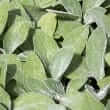Background
- The term "betony" is frequently used for many species of Stachys. Betony should not be confused with Canada lousewort (Pedicularis canadensis), which is also called wood betony.
- Betony has been regarded as a cure-all by many societies including Greece, Italy, Spain, and Britain, as far back as 2,000 years ago. Its constituents include tannins, alkaloids and glycosides, which are typically the active ingredients in herbal remedies.
- Its most commonly reported use is as a nervine (sedative or relaxing agent); the validity of this application has not been confirmed with clinical research.
- Laboratory study has shown that betony may function as an anti-inflammatory, although this effect has not been confirmed. At this time, there are no clinical human trials supporting the use of betony for any indication.
References
- Ahmad VU, Arshad S, Bader S, et al. New phenethyl alcohol glycosides from Stachys parviflora. J Asian Nat Prod Res 2006;8(1-2):105-111.
View Abstract - Duarte MC, Figueira GM, Sartoratto A, et al. Anti-Candida activity of Brazilian medicinal plants. J Ethnopharmacol 2-28-2005;97(2):305-311.
View Abstract - Erdemoglu N, Turan NN, Cakici I, et al. Antioxidant activities of some Lamiaceae plant extracts. Phytother Res 2006;20(1):9-13.
View Abstract - Hayashi K, Nagamatsu T, Ito M, et al. Acteoside, a component of Stachys sieboldii MIQ, may be a promising antinephritic agent (2): Effect of acteoside on leukocyte accumulation in the glomeruli of nephritic rats. Jpn J Pharmacol 1994;66(1):47-52.
View Abstract - Khanavi M, Sharifzadeh M, Hadjiakhoondi A, et al. Phytochemical investigation and anti-inflammatory activity of aerial parts of Stachys byzanthina C. Koch. J Ethnopharmacol 3-21-2005;97(3):463-468.
View Abstract - Kukic J, Petrovic S, Niketic M. Antioxidant activity of four endemic Stachys taxa. Biol Pharm Bull 2006;29(4):725-729.
View Abstract - Maleki N, Garjani A, Nazemiyeh H, et al. Potent anti-inflammatory activities of hydroalcoholic extract from aerial parts of Stachys inflata on rats. J Ethnopharmacol 2001;75(2-3):213-218.
View Abstract - Matkowski A, Piotrowska M. Antioxidant and free radical scavenging activities of some medicinal plants from the Lamiaceae. Fitoterapia 2006;77(5):346-353.
View Abstract - Rabbani M, Sajjadi SE, Zarei HR. Anxiolytic effects of Stachys lavandulifolia Vahl on the elevated plus-maze model of anxiety in mice. J Ethnopharmacol 2003;89(2-3):271-276.
View Abstract - Shin TY. Stachys riederi inhibits mast cell-mediated acute and chronic allergic reactions. Immunopharmacol. Immunotoxicol 2004;26(4):621-630.
View Abstract - Skaltsa HD, Demetzos C, Lazari D, et al. Essential oil analysis and antimicrobial activity of eight Stachys species from Greece. Phytochemistry 2003;64(3):743-752.
View Abstract - Skaltsa HD, Lazari DM, Chinou IB, et al. Composition and antibacterial activity of the essential oils of Stachys candida and S. chrysantha from southern Greece. Planta Med 1999;65(3):255-256.
View Abstract - Skaltsa H, Bermejo P, Lazari D, et al. Inhibition of prostaglandin E2 and leukotriene C4 in mouse peritoneal macrophages and thromboxane B2 production in human platelets by flavonoids from Stachys chrysantha and Stachys candida. Biol Pharm Bull 2000;23(1):47-53.
View Abstract - Stamatis G, Kyriazopoulos P, Golegou S, et al. In vitro anti-Helicobacter pylori activity of Greek herbal medicines. J Ethnopharmacol 2003;88(2-3):175-179.
View Abstract







